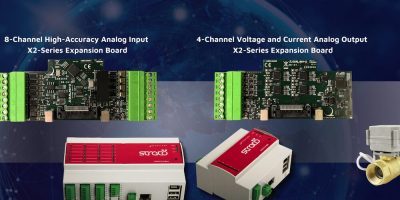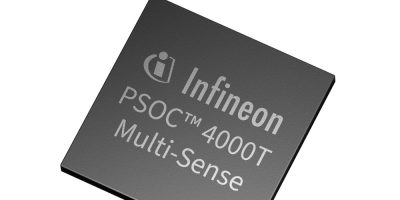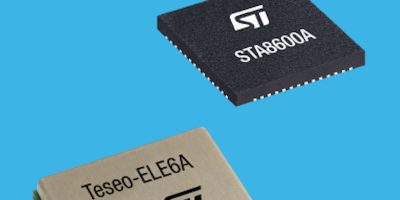ST has introduced the Teseo VI family of global navigation satellite system (GNSS) receivers aimed at high-volume precise positioning use cases. For the automotive industry, Teseo VI chips and modules will be core building blocks of advanced driving systems (ADAS), smart in-vehicle systems, and safety-critical applications such as autonomous driving. They have also been designed to improve positioning capabilities in multiple industrial applications including asset trackers, mobile robots for home deliveries, managing machinery and crop monitoring in smart agriculture, timing systems such as base stations, and many more.
“Our new Teseo VI receivers represent a real breakthrough among positioning engines for several reasons: they are the first to integrate multi-constellation and quad-band signal processing in a single die; they are the first to embed a dual-Arm®-core architecture enabling both very high performance and ASIL-level safety for assisted and autonomous driving applications. Last but not least, they embed ST’s proprietary embedded Non-Volatile-Memory (PCM), thus delivering a very integrated, cost-effective, and reliable platform for new precise-positioning solutions,” said Luca Celant, Digital Audio and Signal Solutions General Manager, STMicroelectronics. “ST’s new satellite-navigation receivers will support exciting, advanced capabilities in automotive ADAS applications and enable many new use cases being implemented by industrial companies.”
Teseo VI is the first in the market to integrate all the necessary system elements for centimetre accuracy into one die, supporting simultaneous multi-constellation and quad-band operations. This innovation simplifies the development of end-user navigation and positioning products, enhances reliability even in challenging conditions like urban canyons, and reduces bill-of-materials costs. Additionally, the single chip accelerates time to market and allows for compact and lightweight form factors.
The new Teseo VI family of precise positioning receiver chips leverages decades of experience and integrates multiple ST proprietary technologies, including precise positioning and advanced embedded memory.
ST’s new GNSS device family includes the Teseo VI STA8600A and Teseo VI+, STA8610A, each with dual independent Arm® Cortex®-M7 processing cores for local control of all the IC’s (integrated circuit) functions. The Cortex-M7 brings powerful 32-bit processing and helps enable concurrent multi-constellation and multi-band operation on a single die.
Teseo VI+ can also host various enhanced positioning engines, developed independently by third ST Authorised Partner companies, to provide complete real-time kinematics for centimetre position accuracy.
Completing the family, the Teseo APP2 STA9200MA operates dual cores in lockstep, providing hardware redundancy for applications such as road vehicle guidance meeting ISO 26262 ASIL-B functional safety. Pin-compatibility between Teseo APP2 and other Teseo VI ICs simplifies PCB design for companies producing ASIL-certified and non-ASIL applications.
All variants feature ST’s innovative RF architecture and GNSS baseband design provides quad-band GNSS support (L1, L2, L5 and E6) with the unique ability to acquire and track only L5. This is highly effective in reducing outliers and increasing robustness in difficult conditions such as urban canyons and in the presence of jammers.
In addition, the proprietary phase-change memory (PCM) technology removes external memory needs, thereby minimising the system bill of materials (BOM) and simplifying the manufacturing supply chain. Proprietary PCM is robust to withstand challenging environments such as automotive, non-volatile like Flash, and has a small cell architecture suited to space-efficient on-chip integration.
The ICs all contain a full set of hardware cyber security features including secure boot, over-the-air firmware update, and output-data protection. In addition, ST’s hardware security module (HSM) provides robust protection against online hacking. The devices comply with the latest UNECE R155 and ISO 21434 specifications that mandate cybersecurity by design.
The Teseo VI product family is supported by an established ecosystem of suppliers and partners for algorithms, reference designs, and compatible complementary hardware.
The Teseo VI product family includes also two new GNSS automotive modules: the Teseo-VIC6A in a 16mm x 12mm form factor (embedding Teseo VI), and the Teseo-ELE6A in a 17mm x 22mm form factor (embedding Teseo VI+). These new modules simplify the integration of Teseo VI/VI+ ICs on the customer platform and ensure optimum performance.
https://www.st.com/teseo6







